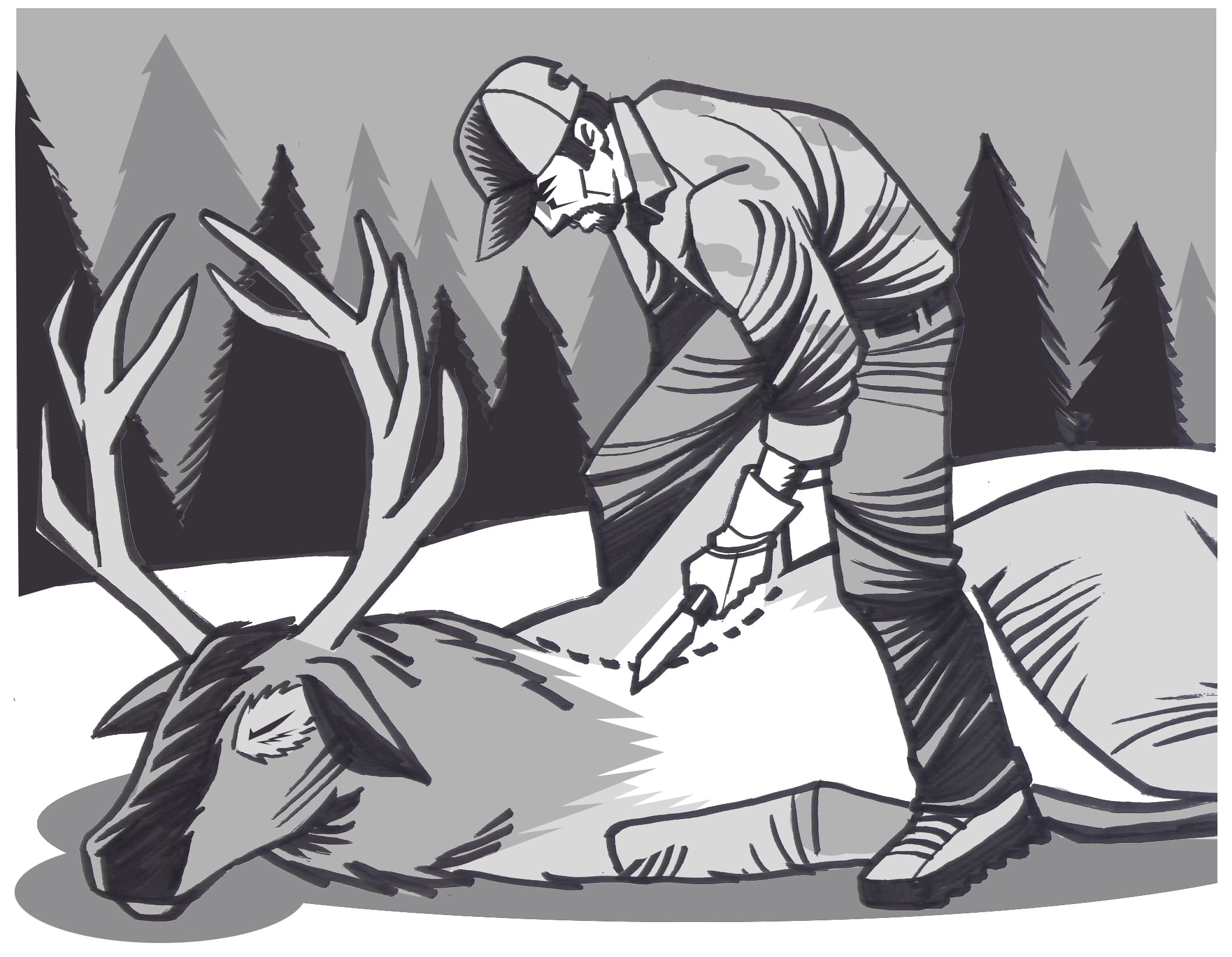Guide to Going Gutless
Rocky Mountain Elk Foundation 08.11.11

Eviscerating an elk can be an unpleasant part of a hunt; the prelude to hard, heavy work packing out quarters. But the Rocky Mountain Elk Foundation is offering insights to a lesser-known, long-proven alternative. Gutless field dressing can save you time, weight and handling of entrails with no significant loss of meat.
This method also allows hunters to skip the traditional step of splitting and handling the spine, which can contain fluids associated with chronic wasting disease.
Here’s how:
1. With the elk lying on its side, begin working on the side facing up. Cut off the lower front leg at the knee joint and the lower hind leg at the hock.
2. Separate the front leg from the ribcage and the hind leg from the pelvis at the ball joint. Many hunters do not skin the legs. Leaving the hide on helps keep meat clean.
3. Skin the side of the animal and remove the backstrap.
4. Strip as much meat from the flank, brisket, ribcage, spine and neck as you can, keeping the strips as large as possible. Remember, large pieces are easier to handle and keep clean than small ones.
5. Turn the carcass over and repeat the above steps.
6. Make an incision between the ribcage and pelvis to reach the tenderloins lying along the underside of the spine, and any internal organs you wish to keep.
To reduce weight, bone out the legs by flaying them open lengthwise on the inner side and removing the bones. When cool, sack or wrap the meat in clean heavyweight cotton.
For an excellent video on gutless field dressing, contact longtime Wyoming outfitter and RMEF supporter Ron Dube at 307-527-7815.


